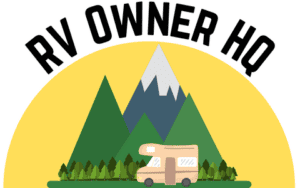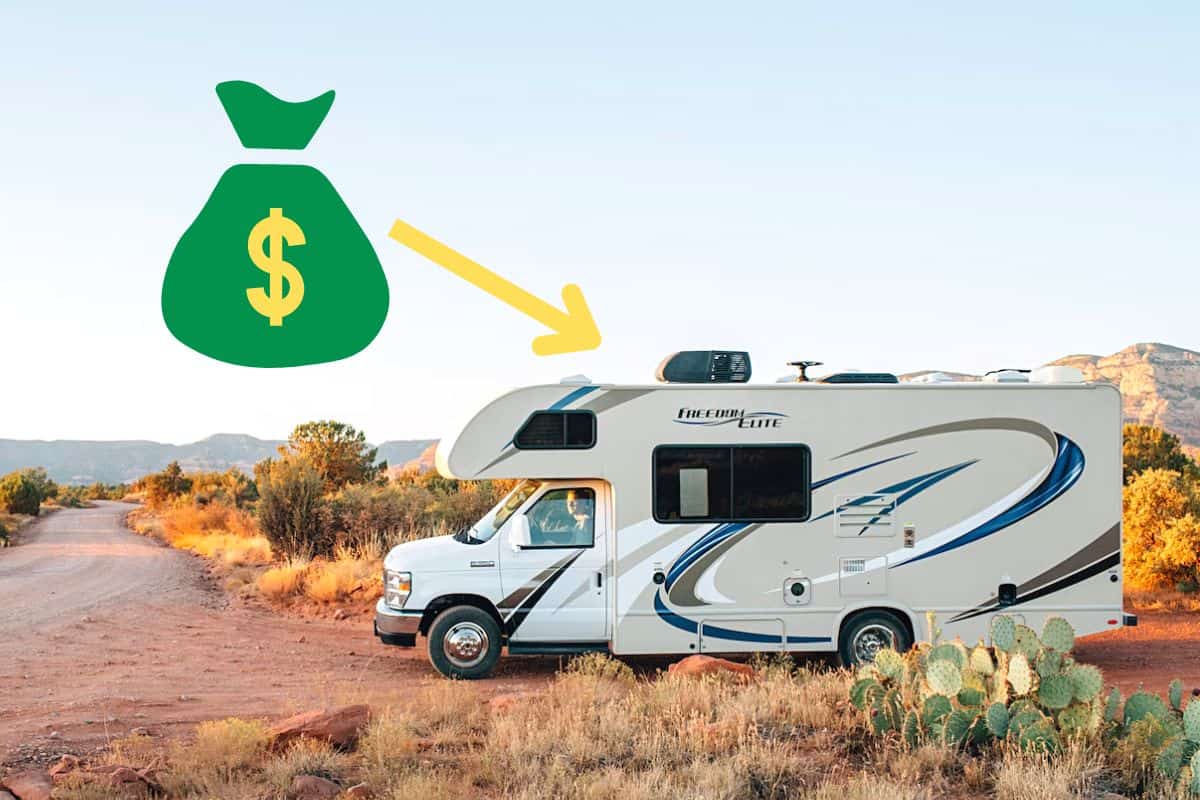Class C motorhomes allow RVers to travel in comfort and style, with a fully-equipped living space combined with a powerful engine and robust chassis.
However, all this capability comes at a price, as Class C motorhomes are one of the most expensive RVs you can buy, with entry-level options starting at around $100,000 and top-of-the-line Super Cs costing close to half a million.
For comparison, you can get a fully decked-out travel trailer for less than $30,000.
This leaves many RV shoppers wondering why Class Cs are so expensive.
So to help answer this question, we created this blog post, which breaks down the key reasons why Class C RVs are so expensive.
We’ll explore the high-priced truck chassis, labor-intensive construction, and lengthy list of amenities that all contribute to the steep total price.
Additionally, we’ll look at options for scoring a deal to put your dream class C within closer reach.
Key Takeaways
- Class C RVs cost more because they combine an expensive truck chassis with a custom-built fully furnished home on wheels.
- The cost of a Class C motorhome is significantly influenced by its powerful truck chassis, labor-intensive construction, and comprehensive amenities.
- While Class C RVs are pricey, strategies like buying used, choosing smaller models, shopping during the off-season, and comparing financing options can make ownership more accessible.
At a Glance – Cost Breakdown of Class C Motorhomes
Class C motorhomes merge truck chassis with fully furnished living spaces, by adding a custom living area to the vehicle’s base.
This unique blend offers the power and durability of a truck with the comfort and amenities of a home, making it ideal for extended travel and even full-time RV living.
This combination, however, contributes to their higher cost due to the complexities of integrating these two distinct elements into a seamless and functional design.
To gain further insight into why Class C RVs are so costly, let’s break down the average expense allocation that goes into a new class C:
- Truck Cab Chassis – 35%
The truck chassis with engine, transmission, and cab accounts for over a third of the total cost. Powerful truck platforms like the Ford E-350s and the E-450s are expensive on their own before adding the RV body. - Body Construction – 25%
The RV living quarters built onto the chassis use various materials and construction techniques that require pricey labor and specialty parts. Complex curved fiberglass exteriors and customized interiors drive up build expenses. - Furnishings & Equipment – 20%
Class C motorhomes are packed with entertainment systems, appliances, furniture, generators, full bathrooms, and bedrooms. Adding all these amenities accounts for about 20% of the total vehicle price. - Dealer Profit Margin – 10%
Dealers purchase class C RVs from manufacturers at wholesale prices before adding their own profit margin. About 10% goes to the dealership’s bottom line profit. - Additional Expenses – 10%
Other costs like manufacturer warranties, state taxes, documentation fees, and freight charges add a final 10% to the purchase price.
Now that we’ve seen a high-level cost breakdown, let’s examine the specific components and features that make class C RVs a premium-priced motorhome category.
Why are Class C RVs More Expensive than Other RV Types?
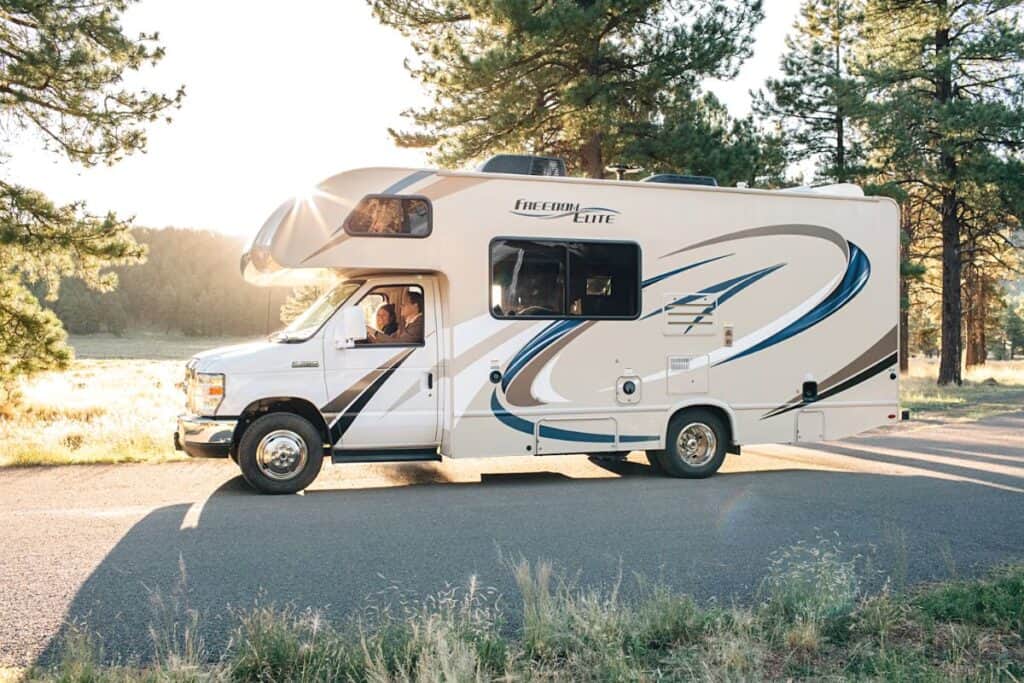
When shopping RVs, you’ll quickly discover Class C motorhomes occupy an upper pricing tier compared to other RV classes, like travel trailers and 5th wheels.
This is due to a variety of reasons.
Combined Vehicle + Living Space:
Class C RVs essentially combine a large van or truck cab with a spacious living area in one integrated vehicle. This merges two major cost components into a single high-priced motorhome:
- The vehicle includes a chassis, engine, transmission, steering, brakes, electronics, and driver cab interior.
- The mobile RV dwelling features floors, walls, beds, cabinets, plumbing, appliances, furniture, storage compartments, and all the amenities needed for RV living.
When you combine these two expensive segments into one motorhome, you end up with a steep MSRP of over $150k for high-end units.
More Amenities Baked In:
In addition to housing and transportation, Class C RVs cram even more features like entertainment systems, generators, tankless water heaters, and satellite dishes, which drives up their base cost even more.
Labor-Intensive Custom Assembly:
Combining the truck cab and RV body is an extensive manufacturing endeavor requiring significant time, energy, and craftsmanship.
Each motorhome build involves custom measurements and alignments to connect the cab and living quarters into one luxury vehicle. This meticulous approach comes at a premium price.
In short – you’re paying for the convenience of getting a robust versatile vehicle merged with an amenity-packed home in one complete package.
The Added Cost of the Truck Cab Chassis
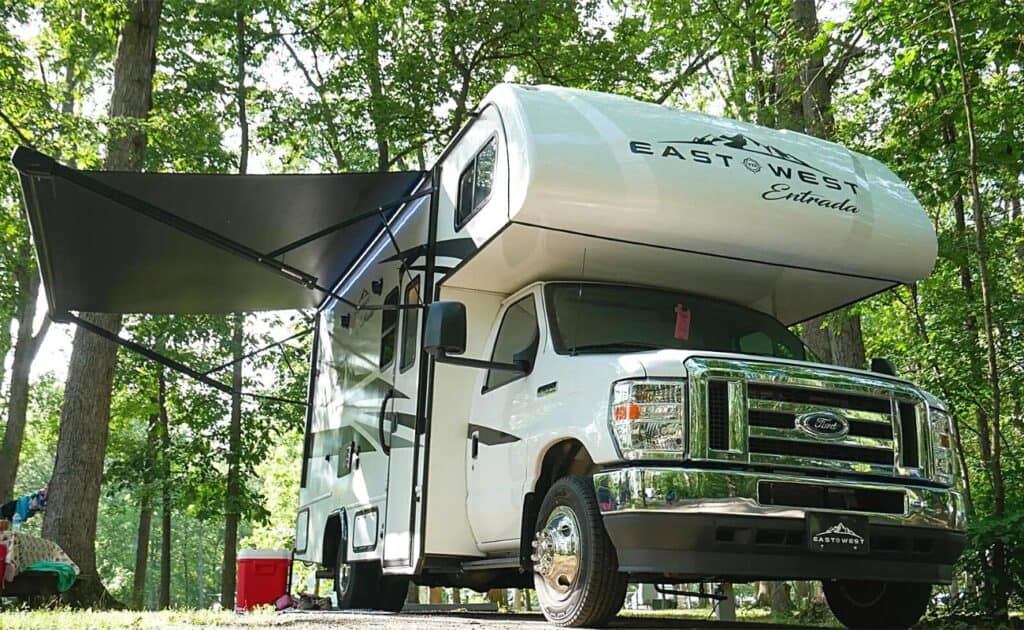
As we saw earlier, the truck chassis alone accounts for 35% of a Class C motorhome’s total cost.
This robust chassis usually costs between $35,000 and $40,000, depending on the model and specs.
To further breakdown this cost let’s take a look at why bare-bones truck chassis cost up to $40,000.
High Power and Torque Output:
Class C motorhomes have large diesel or gas V8 engines that typically put out more than 300 horsepower and 400 pound-feet of torque.
This provides the power and torque necessary to handle the heavy weight and large size of a Class C motorhome.
However, these industrial-strength engines raise the overall chassis price tag, as just the 7.3L “Godzilla” V-8 engine direct from Ford Performance costs more than $8,000.
Sturdy Foundation:
Chassis for Class C RVs are over-engineered to withstand carrying the weight of a fully loaded motorhome that often can weigh as much as 30,000 pounds.
Upgraded suspension, steering, and stability components ensure reliable handling under heavy loads but also add additional cost to the RV.
Passenger Cab:
A cost often overlooked on the truck chassis is the actual cab itself, which consists of everything you would find in a standard vehicle, including driver controls, instrumentation, heating/cooling systems, passenger comfort elements, and advanced safety features.
Motorhome Construction Materials & Labor
These apartment-on-wheels built onto truck chassis are intricate structures requiring expensive materials and skilled design assemblies.
These construction costs take a 25% bite out of the total vehicle MSRP.
Fiberglass Bodies and Specialized Labor:
Most Class C motorhomes feature fiberglass Azdel composite bodies that are challenging to work with and require specialized training.
This time-intensive laminated exterior adds considerable material and labor costs to the RV and that’s before decals or full body paint is added to the coach.
Comfortable Luxury Interiors:
Every interior aspect including floors, cabinetry, ceiling treatments, and furniture involves meticulous custom measurements to fit the unique dimensions of that specific motorhome build.
These made-to-order elements demand intensive labor.
Plus, high-end Class Cs utilize materials like polished hardwoods and deluxe upholstery that add additional cost.
Strict Regulatory Standards:
Class C RVs must meet rigorous RVIA certification standards for structural integrity, electrical, plumbing, insulation, and heating/cooling systems.
Complying with these standards increases manufacturing costs that get passed onto the buyer through higher list prices.
A Self-Contained RV with Multiple Amenities
In addition to the driving cab and living quarters, Class C motorhomes cram even more features and technology into the confined space.
Outfitting these RVs with modern comforts and conveniences contributes to around 20% of the total MSRP.
- Fully-Equipped Kitchens – Class C kitchens rival luxury apartments with hardwood cabinetry, solid surface countertops, high-end faucets, and multi-burner cooktops. In addition, large refrigerators/freezers, convection microwaves, and extra prep space provide full cooking functionality.
- Full Three-Piece Dry Baths – A full three-piece dry bath with a shower, flush toilet, and vanity is standard on just about every Class C motorhome. And when you combine the bathroom with the RV’s black, grey, and freshwater management systems it allows the motorhome to be self-contained and camp off-grid for extended periods.
- Bedrooms and Seating Areas – Spacious sleeping quarters feature RV queen-sized beds with padded mattresses, lighting fixtures, and multiple charging ports for your phone and other electronic devices. The lounge area typically located at the front of the RV provides ample comfortable seating with dinette booths and sofa beds for additional guests.
- Climate Control Systems – Multi-zone heating and A/C units with control panels ensure the interior of the motorhome stays at the perfect temperature no matter how hot or cold it gets outside.
- Entertainment Upgrades – Class C RVs often offer sound systems, external speakers, HDTVs, cable pre-wiring, and Bluetooth. As well as satellite dishes, which provide access to programming while RVing remotely.
- Safety and Convenience Technology – Newer Class C motorhomes also offer all the latest safety and convenience tech, including driver assist features, 360-degree cameras, tire pressure monitoring systems (TPS), and tank level monitors.
Why Some Class C Motorhome Brands Cost More
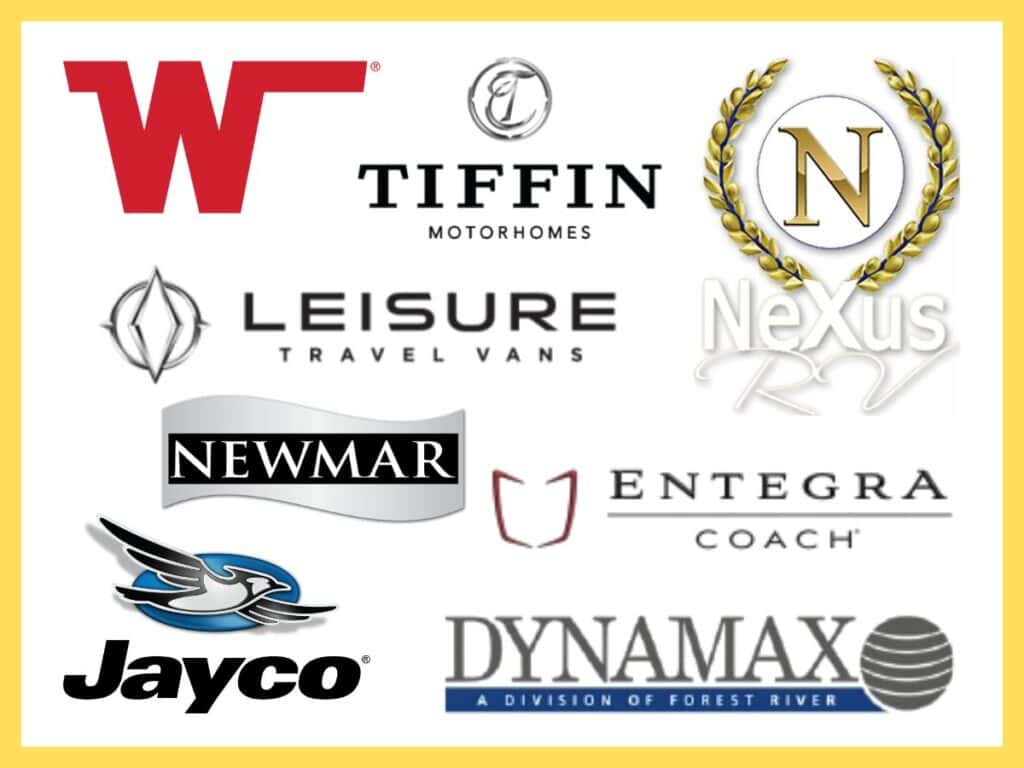
While shopping Class C motorhomes, you’ll notice certain RV brands like Winnebago, Entegra, Tiffin, and Newmar command significantly higher prices over more entry-level manufacturers, like Forest River, Coachmen, and East to West.
But why is this? Well, it turns out for quite a few reasons.
- More Premium Features and Finishes – Top-class C brands outfit their vehicles with higher-grade construction materials, technology integrations, and luxury interior appointments not found with starter brands, including premium floors, Corian countertops, and high-end appliances to name just a few.
- Better Warranties and Service Networks – Higher-end motorhome makers offer generous warranties with additional prepaid maintenance plans available. In addition, they also usually offer longer more comprehensive multi-year warranties as well as extensive nationwide service networks.
- Strong Brand Recognition and Desirability – Iconic makers like Winnebago carry decades of consumer trust and recognition. Also, these brands tend to be on the cutting edge when it comes to RV tech and features. Plus, they usually offer exclusive owner-club access and brand notoriety.
- Future Resale Value Protection – Industry-leading Class C builders retain the highest resale values at trade-in time. Owners recoup more money reselling a Tiffin than an unproven lesser-known brand, which can help to offset the initial higher cost.
Top Luxury Class C RV Brands
Tips for Getting the Best Price on a Class C
While Class C RVs are one of the more expensive types of RVs you can buy, only rivaled by Class A motorhomes and Class B campervans, the below smart shopping strategies can help you save big when shopping for the perfect motorhome.
- Buy Used Class C Motorhomes – Pre-owned class C motorhomes can offer dramatic discounts versus new ones while still providing modern amenities and reasonable mileage. Private sellers often negotiate pricing even further for quick sales.
- Consider Smaller and Simpler Class C RVs – Opting for a smaller simpler Class C without slide-outs can cut considerable costs from the initial purchase. Choosing a shorter body also lowers ownership and maintenance costs as well as, as there’s less RV to store and fix.
- Shop During the Off-Season and Ask About Off-Season Discounts – Dealers want to clear inventory before winter and before they receive new models, typically in the spring. So it’s best to shop for an RV in the colder months and during the off-season if you want to save money.
- Shop Around for Financing – If you’re financing your RV purchase don’t just take whatever financing the first RV dealer offers you. Shop around from dealer to dealer because even just one or two percentage points can make a big difference when you’re spending over $100,000. Also, don’t forget about your local bank, as they often have very competitive rates sometimes substantially cheaper than on-lot financing.
Got Questions? We’ve Got Answers…
Additional Class C RV Resources
Are you shopping for a Class C RV and want to know what the best options are? If so, you should check out some of our other blog posts.
- 8 Best Class C RVs for a Family of 4 (With Pricing)
- 10 Best Class C RVs Under $100,000 (With Video)
- The 5 Longest Class C Motorhomes You Can Buy
Recent Posts
When cruising down the highway in your RV, the last thing you want is a tire blowout! Not only is it dangerous, but RV tire replacement isn't cheap, costing $200 to $300 per tire. The good news,...
Nothing ruins an RV adventure faster than a breakdown with no way to fix it. Because of this, every RVer should have a well-stocked RV tool kit for those unexpected roadside emergencies and campsite...
